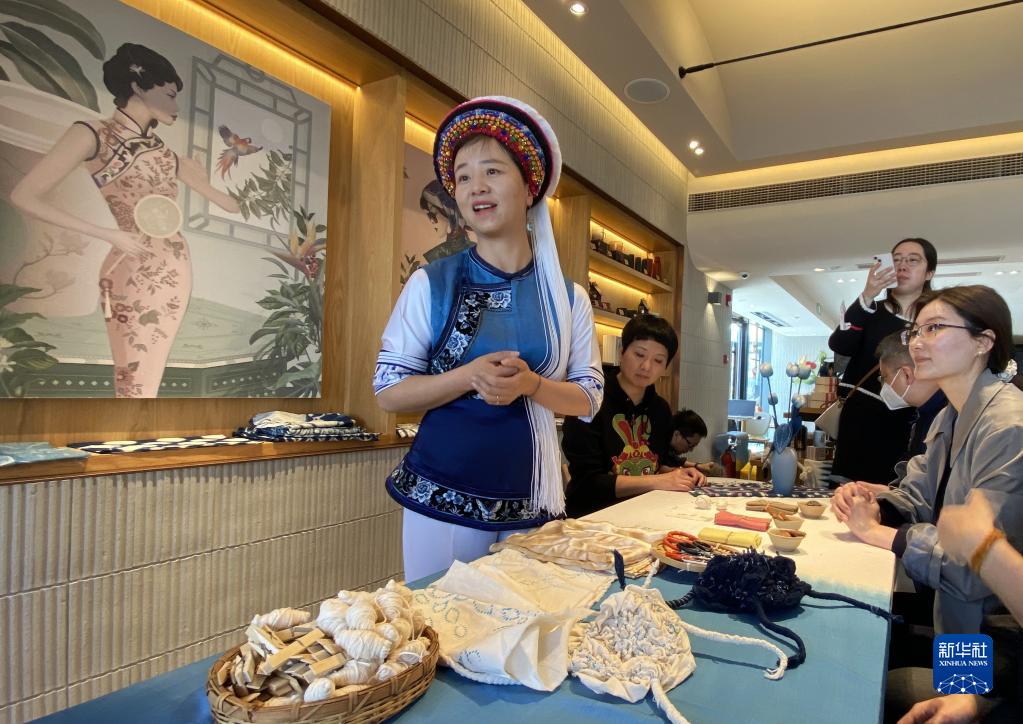Craftswoman presents tie-dye techniques at Starbucks store

Zhang Hanmin, a craftswoman from southwest China's Yunnan province, recently presented the intangible cultural heritage of tie-dye at a Starbucks store in Shanghai.
Tie-dye is an ancient Chinese textile dyeing technique that has been practiced by the Bai ethnic group since the Tang (618-907) and Song (960-1279) dynasties. It was recognized as a national intangible cultural heritage in 2006, with Zhang's hometown of Zhoucheng village in Yunnan's Dali being the birthplace of Bai tie-dye.
At the Starbucks store, Zhang demonstrated how to tie-dye a silk scarf using coffee grounds and Pu'er tea, explaining the dyeing and color fixing effects of the two dyes.
She also highlighted how different plants can be used to produce different colors. For example, gardenia fruit and onion skin can make the color yellow, walnut skin produces a brown color, and coffee grounds create a lighter brown. As such, tie-dye can be seen as embodying an environmentally friendly lifestyle.
Zhang has a strong sense of urgency in passing on this traditional skill to future generations. Over the past decade, she has opened several workshops in her hometown and other cities in Yunnan to promote the tie-dye technique.
Coincidentally, Starbucks China started to cooperate with charity organizations in China around a year ago, launching a program to help empower women economically and promote the inheritance of intangible cultural heritage. Through this project, Zhang has had the opportunity to travel around the country showcasing Bai tie-dye techniques.
Through innovative dyes and creative promotional efforts, more people will likely be attracted to protect and pass down the environmentally friendly traditional craft of tie-dye.
Related articles
-
 Sculpture Exhibition Reliving China’s Aerospace History Held in Beijing
Sculpture Exhibition Reliving China’s Aerospace History Held in BeijingMore
-
 People enjoy themselves in summer across China
People enjoy themselves in summer across ChinaMore
-
 Passing Down Memories of the Central Axis of Beijing
Passing Down Memories of the Central Axis of BeijingMore
-
 The pure intentions of a Beijing-based purifier manufacturer
The pure intentions of a Beijing-based purifier manufacturerMore
-
 Rediscovering Chinese aesthetics
Rediscovering Chinese aestheticsMore
-
 Must-do prep for prosperous Spring Festival in China
Must-do prep for prosperous Spring Festival in ChinaMore
